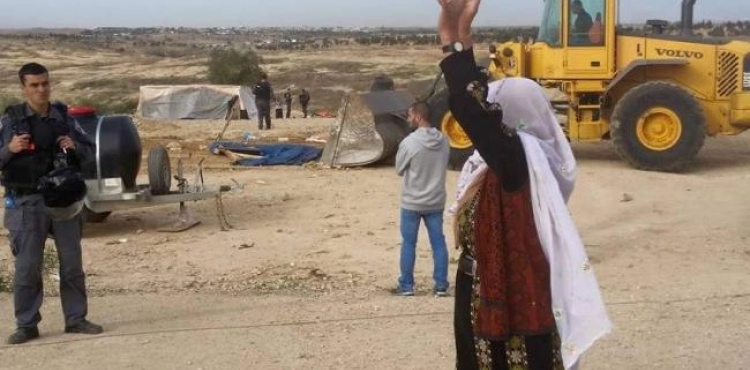Israeli occupation police, "Israeli" on Monday, the village of "Al-Araqib" stolen confession and threatened displacement in the occupied Negev, for the 149th time in a row since 2010.
According to local sources, the occupation forces raided the village of al-Araqib, together with the unit "Yoav" of the "Negev Development Authority" Judaization, and broke into the homes of the people. She said the police had dismantled the tents of the people of al-Araqib and dragged them with SUVs belonging to the unit, "Yuval", without taking bulldozers and demolition mechanisms. Since July 27, 2010, the Israeli occupation authorities have demolished 149 times of demolitions on the grounds that the ownership of the lands on which the village was built belongs to the Jewish state. The last demolition (the 148th time) was on Thursday, July 25. The Israeli occupation authorities, through the continuation of the demolition of the houses of "Al-Araqib" to push the people to despair, in an attempt to displace them from their land, in favor of settlement expansion in the Negev. The people of "Al-Araqib" insist on staying in their village and rebuilding the tents and housing and address the schemes of displacement. When Israel occupied the Naqab area, which represents about half of historic Palestine, in 1949, the village of Al-Araqib became one of 45 Arab villages that are not recognized by Tel Aviv and deprived of basic services as "illegal villages." The occupation forces are working on the demolition of these villages and the annexation of their villages in eight communities established for this purpose, based on a decision by the Israeli occupation courts in 1948 that "there is no ownership of the Bedouins in their land", although the total population of these villages is about 120,000. Some 240,000 Arab Palestinians live in the Negev desert, half of them in villages and communities some of which have existed for hundreds of years.












